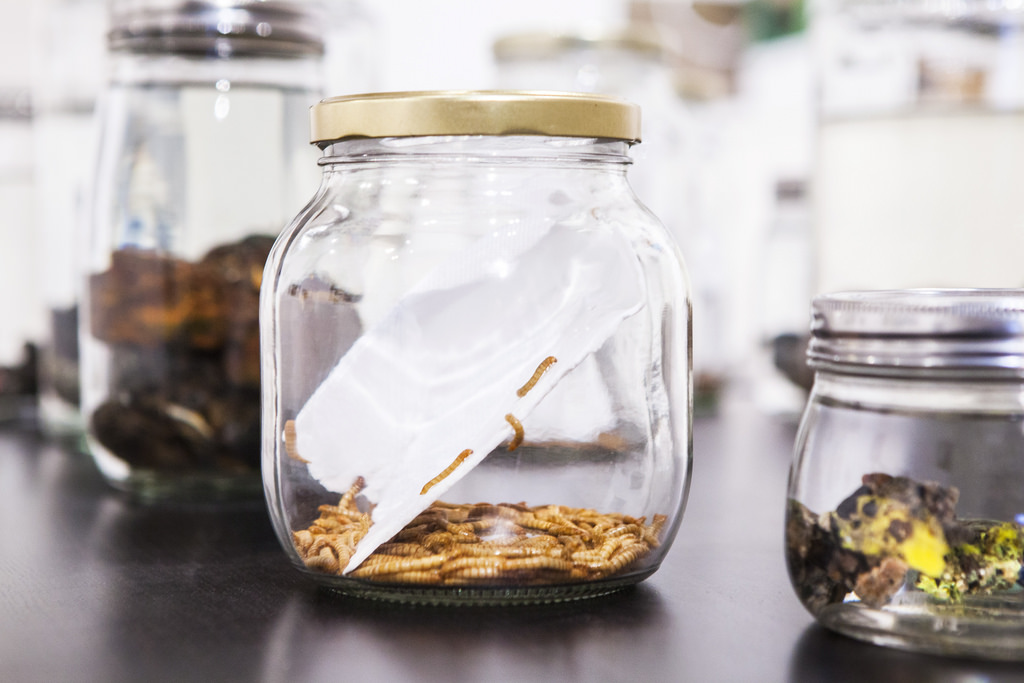
Kristina Lindström and Åsa Ståhl, Plastic Imaginaries, 2016. Photo: Anna Autio
Finally! A few notes from what might very well have been the most exciting and eye-opening conference of 2016: the HYBRID MATTERs symposium that took place in Helsinki over a month ago. As Erich Berger (an artist, curator and the director of the Bioartsociety) explains in the video below, the symposium was the conclusion of a 2 year project that used artistic and scientific research to look at the material conditions and transformative power of human activity over the environment.
This research focused on hybrid ecologies, the convergence of our environment with technology and essentially the intentional and unintentional transformation of our planet through human activity. Hybrid ecologies unfold through complex interactions between actors and elements: human, non-human, biological, mineral, robotic, artificial, etc. There has always been some forms of interaction between humans and their immediate biological environment (through agriculture, bee keeping, fermentation techniques, etc.) but contemporary science is speeding up the synergies and frictions. To the point that the biological itself becomes technological and technologically-altered and the result begins to feedback in the environment.
HYBRID MATTERs not only registered these interactions but also questioned their meaning and implications. The program also attempted to delineate the position of mankind in these new ecologies. Should we keep on thinking of nature as something independent from us and from our activities? Or should we recognize that we drive much of this process and need take responsibility for it?
HYBRID MATTERs by Erich Berger on 25 November 2016
What made the event so interesting for me was that it suggested a new perspective on the Anthropocene discourse. It looked beyond the usual (and of course justified) alarmist attitude and proposed other approaches to this new geological age.
Not only are we starting to realize that we can’t fully control the planet but we also have to come to terms with the fact that the life that we’ve created (almost) from scratch is being slowly released into the world, interacting with the environment in sometimes unpredictable ways and becoming an integral part of it. We need to start thinking about how we, the humans, can co-evolve in a more sympathetic and mutually beneficial way with other living entities and global phenomena.
The symposium also reminded us that the environment is not just a passive victim of human greed and foolishness, it is also a sophisticated assemblage of interconnected, highly adaptive systems and entities that can work for us, with us but also without us. Maybe the time has come for us to broaden our definition of the environment and accept that nature cannot be contained into a romantic ideal of a pristine, untouched, virginal world.
The most inspiring day of the short symposium was Day 2, the panel day. Artists, researchers, curators, biologists, bioroboticists, archaeologists got together and discussed passionately about how we should start developing a language to visualize, narrate and understand eclectic but interconnected topics that range from plant awareness to big bacteria, from autistic conception of the economy to plastic trash on beaches, from de-extinction to tulipomania.
The videos of the whole symposium are online so my notes are not going to cover everything that was said. Instead, i’m going to adopt a very subjective approach, recording few key ideas and concepts, a few artworks and research practices that i believe deserve to be highlighted.
HMs panel on Plant subjectivities, assemblies and assemblages with Kira O’Reilly, Laura Beloff, Jens Hauser, Monika Bakke. 25 November 2016
The panel on plant subjectivities was composed of artist and leader of the MA in Ecology and Contemporary Performance at the Theatre Academy of the University of the Arts Helsinki Kira O’Reilly, artist and researcher Laura Beloff, art curator and media studies scholar Jens Hauser as well as writer and editor Monika Bakke from the Adam Mickiewicz University, in Poznań.
Together, the panelists discussed the natural and post-natural hybridity of plants.
Monika Bakke talked about plantoids, plant farming in space, plant sexuality but i was especially fascinated by her brief introduction to plant intelligence. In 1880 already, Charles and his son Francis Darwin were talking about a ‘root-brain’. Contemporary research confirms the existence of this root brain, it is a decentralized communicative network that enables plants to behave as multitude and manifest a kind of swarm intelligence. They also exhibit a certain awareness of the world around them.
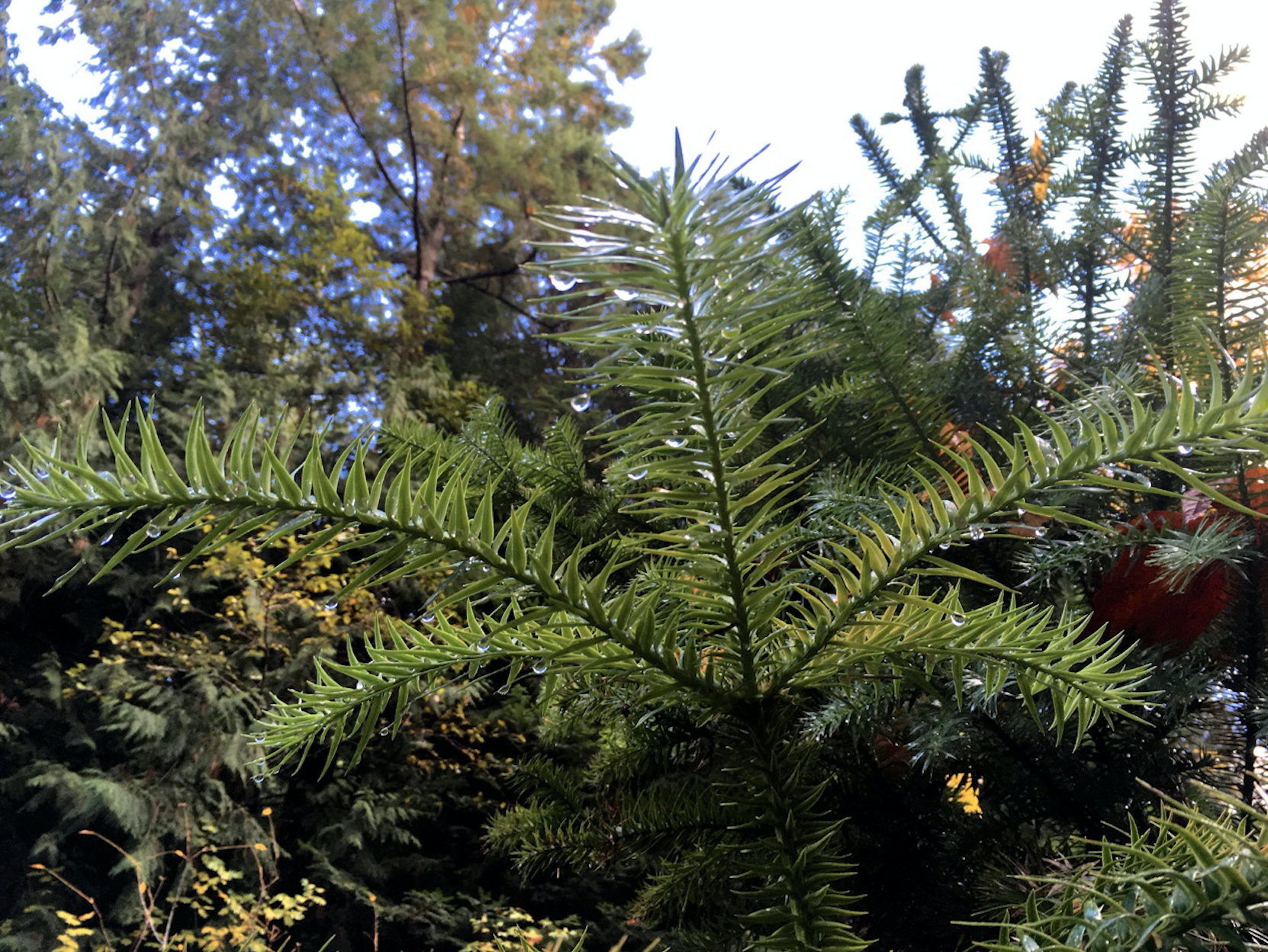
Cunninghamia, one of the Eocene trees, growing in Oliver Kellhammer’s garden on Cortes Island. Image: Daniel J. Pierce. Photo: motherboard
Another remarkable feature of plants is that they are more resilient to events leading to extinction than animals. Artist Oliver Kellhammer is looking at this resilience. His project Neo-Eocene focuses on plant species that have survived through multiple geological periods. Charles Darwin called them living fossils. The artist is trying to recreate forests made of living fossils trees in Canada. These trees used to be native to the area and they thus connect distant geological epochs with a future significantly modified by global warming. The future after all may belong to those species that have already proved to be able to overcome extraordinary climate conditions.
I bloody love that project, by the way!
Jens Hauser talked about microperformativity, a term he has been using since 2010 to describe a shift in scale towards molecules, cells, proteins, bacteria, viruses, etc. This shift away from the human body redefines what we consider to be a body and can also be interpreted as a blow to human narcissism.
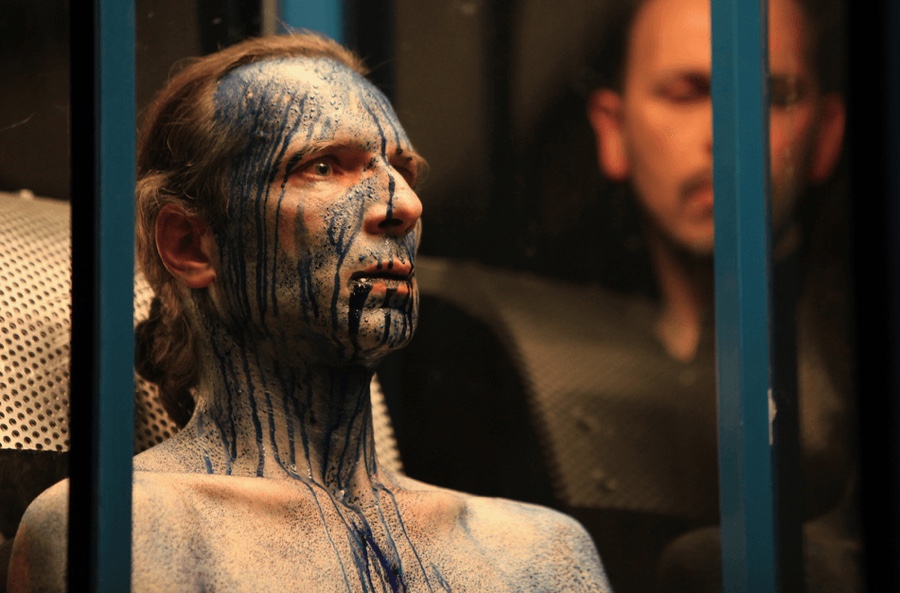
Yann Marussich, Bleu Remix, 2007. Photo by Isabelle Meister
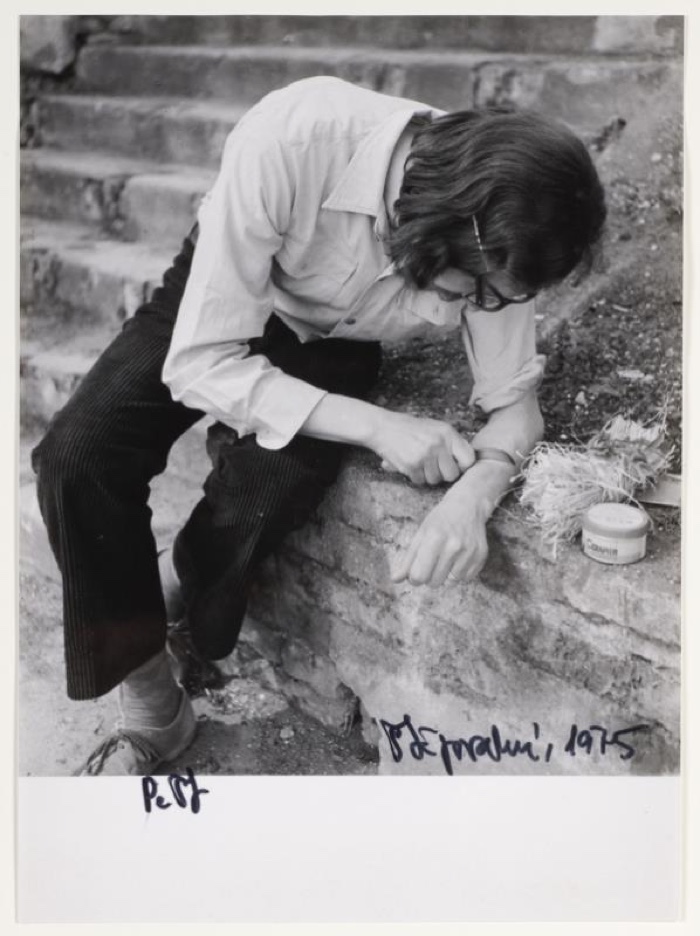
Petr Stembera Graft, Graft, 1975. “In a manner customary in fruit-farming, I grafted a branch taken from a shrub to my arm”. Photo: Kontakt
Hauser also discussed plantamorphization, another ‘bioart trend’ which consists in adopting characteristics of the vegetative at large, shifting the attention from movement to growth. An example of this type of practice is Yann Marussich’s iconic performance Bleu Remix. I was less familiar with the work of Petr Stembera who, in the 1970s, grafted a bush sprig into his arm.
Titled Survival of the Prettiest, Laura Beloff‘s talk explored evolution: from natural selection to artificial selection and towards aesthetic selection. More precisely how biological organisms are being designed and selected based on aesthetic criteria that are deeply intertwined with our capitalistic world. An early example of that is the 17th century tulipomania in The Netherlands.
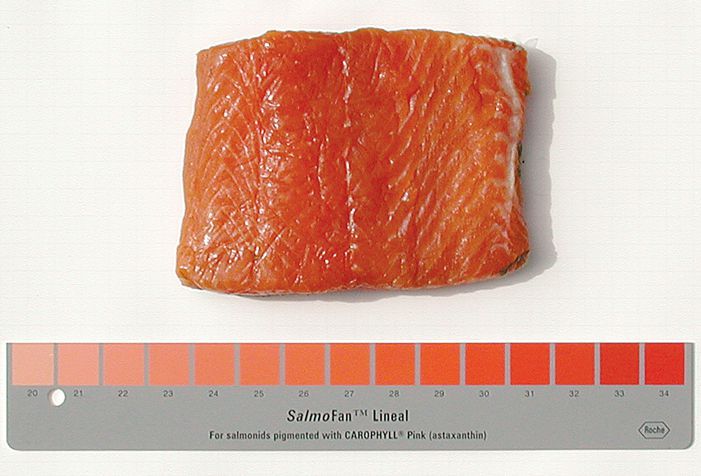
DSM SalmoFan™. Image via Quartz
A contemporary occurrence of this new spin on evolution is farmed salmon. Clients visiting a farm are invited to selected their ideal salmon colour flesh from a DSM SalmoFan™, a colour card specially developed by a pharmaceutical company for Salmonids. Depending on the precise hue the clients want the flesh to be, the farmer will adjust the colouring added to the food given to the fish which, in turn, will determine how orange or red the salmon will be.
HMs panel Hybrid Growth with Jonas Jørgensen, Merja Penttilä, Paavo Jarvensivu and Maarja Kruusmaa. 25 November 2016
The Hybrid Growth panel explored the hybrid nature of the term growth and its meaning in nature, technology and economics.
In her talk Living Factories: Synthetic Biology for a Sustainable World, research biologist Merja Penttilä explained how synthetic biology could enable us to replace petrochemicals with renewable raw material, while retaining biodiversity and genetic diversity and using contained production systems.
Post-doc researcher in economic culture and member of Mustarinda (a collective currently focusing on post-fossil fuel culture) Paavo Jarvensivu believes that we need to get rid of the current abstract, narrow and autistic conception of the economy. Currently, society has to match economic indicators (inflation, budget deficit, employment rate, etc.) and this is wrong.
We seem to think that there is lack of money but no limit of resources. What would happen if we took things upside down and assumed that there is unlimited money but limited resources?
Professor of biorobotics Maarja Kruusmaa looked at Growth and Information Technology. It was brilliant and often funny. The growth the title of her talk alludes to is the growth in data. From people who don’t seem to get tired of measuring themselves (a trend called quantified self) to robots (‘they are just sensors with hands and legs’), data multiplies fast.
Growth in data means bigger and bigger server farms and other heavy material infrastructure to preserve it.
Kruusmaa (half-jokingly) suggested that maybe people are going start thinking of saving energy by creating less data or by being more creative with the way they produce this data. For example, by taking black & white pictures rather than colour ones as they are less pixel-hungry and thus consume less bits and bytes.
HMs panel In the Aftermath with Kristina Lindström, Åsa Ståhl, Thora Petursdottir, Björn Wallsten. 25 November 2016
The panel In the Aftermath was another brilliant one. It invited us to look at technological development under a new perspective. Not the prevalent one that champions ideas of progress and novelty but one that considers processes of decay, erosion, breakdown and mouldering. I’ve already written about Björn Wallsten‘s introduction to the world of urks and i mentioned Kristina Lindström and Åsa Ståhl exploration of plastiglomerates and styrofoam-eating worms in my review of the Hybrid Matters exhibition. I still had to talk about the equally fascinating work of Þóra Pétursdóttir.
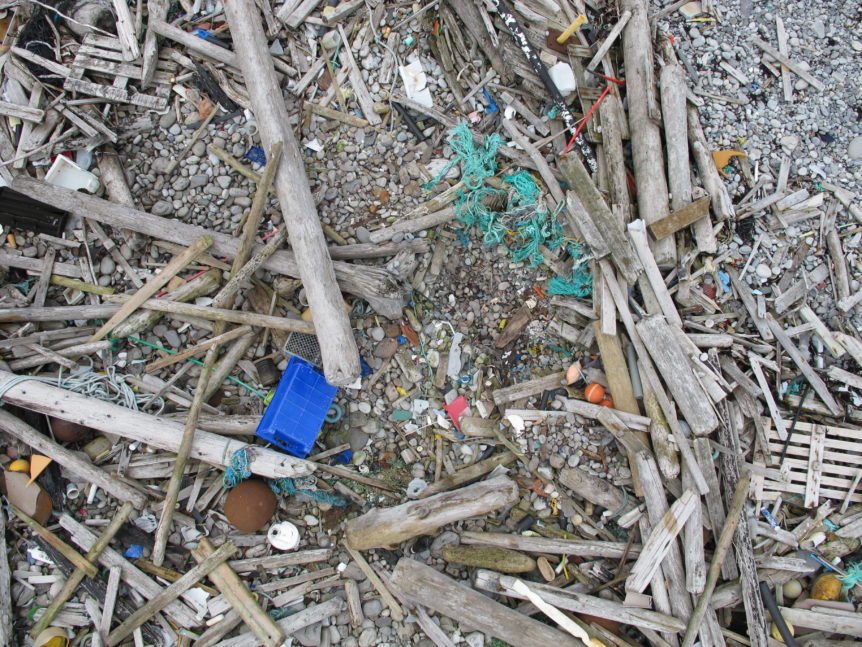
Drift Matter. Photo: object matters
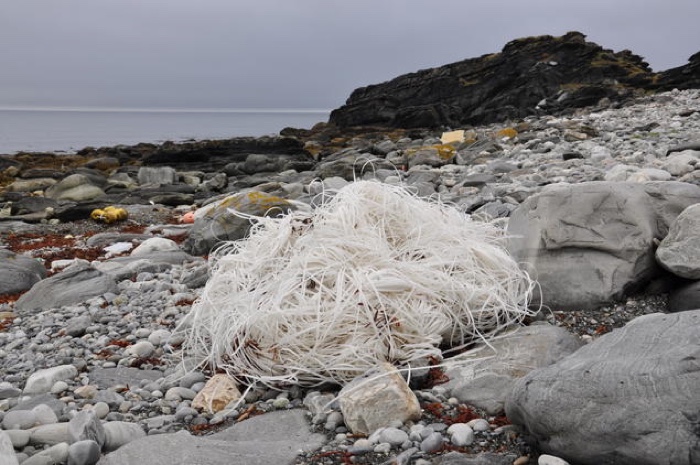
Drift Matter. Photo: Þóra Pétursdóttir via CAS Oslo
Pétursdóttir, a postdoctoral researcher at the Arctic University of Norway, is an archaeologist from a branch of archaeology that looks at the recent past and the contemporary.
An interesting point that she made was that archaeology has always been about the anthropocene. It is completely reliant on our footprint, on our pollution.
A particular focus of her research is the phenomenon of “the drift beach“, the marine debris that drift and cluster along the Arctic coastlines. Drift matter is a one of the most urgent environmental problems across the world. It is particularly interesting to study its history and meaning in Northern Norway and Iceland. Both have a long heritage of using this material and until recently, this drift matter was considered a natural resource and also a part of the environment. It used to include a lot of wood which was collected and used by the inhabitants as these regions are sparsely forested. The composition of the material has changed drastically over the last century and so has the attitude towards the drift material and the drift beach. It is now regarded as a hazard, an intrusion on the environment.
Marine debris is an environmental problem but, Pétursdóttir argues, it is also part of the environment, it cannot be eliminated from it. This material has never been considered of archaeological interest because it evades the kind of logic that archaeologists expect from their material: they are only interested in waste that has been intentionally deposited, that relates to specific culture or group of people, waste that is traceable, that construct a progressive human history. The drift material doesn’t comply with this nice, linear history.
The interest of drift material is that it suggests unexpected alliances and other notions of environment. It endlessly wanders, gathers and bonds outside our control and may thus contribute to a less anthropocentric and more ecological heritage conception.
HYBRID MATTERs Response to the day by Oron Catts. 25 November 2016
Oron Catts is an artist, researcher and curator. He is the director of SymbioticA. Together with Ionat Zurr, he is also a visiting professor of Contestable Design at the Royal College of Art in London (head to this video if you’re curious about Contestable Design.) Catts wrapped up the discussions of the HYBRID MATTERs symposium. His closing remarks were incisive, and appropriately provocative. I’ll just point to a couple of them:
“We try to rationalize things but we are totally irrational ourselves so how could we design rational independently autonomous system without fucking it up? We can’t!”
“Any attempt to try and assert control over autonomous system is a violent act. And we are all engaged in this violence.”
“Hybrid might not be right metaphor. Maybe parasite would be a more appropriate one.”
“Europe is increasingly scary. The kind of funding that is currently given to artists to engage in crossover between living systems, technology systems, society and culture are neoliberal and driven by bankrupt political systems.”
At that point, he also mentioned that a few art and technology festivals look more like trade shows than art events. I just wanted to jump on the stage and hug him!
“Maybe we need less white people. The world has been repeatedly fucked over by middle aged, middle class white men. I’m one of them so maybe you should listen to other people.”
The HYBRID MATTERs symposium was a collaboration between the Bioartsociety and the MA in Ecology and Contemporary Performance, Theatre Academy of the University of the Arts Helsinki.
The event was part of the HYBRID MATTERs Nordic art&science network program which investigates the convergence of our environment with technology and essentially the intentional and unintentional transformation of our planet through human activity. The program took the form of a series of researches, encounters, art commissions, exhibitions and a symposium.
Previously: From animal sensors to Monet as a painter of the anthropocene. 9 things i learnt on the opening day of the HYBRID MATTERs symposium, HYBRID MATTERs exhibition: when biological and technological entities escape our control and transform the planet, Albedo Dreams. Experiments in DIY climate manipulation, HYBRID MATTERs: The urks lurking beneath our feet and The Christmas tree, your typical postnatural organism.
